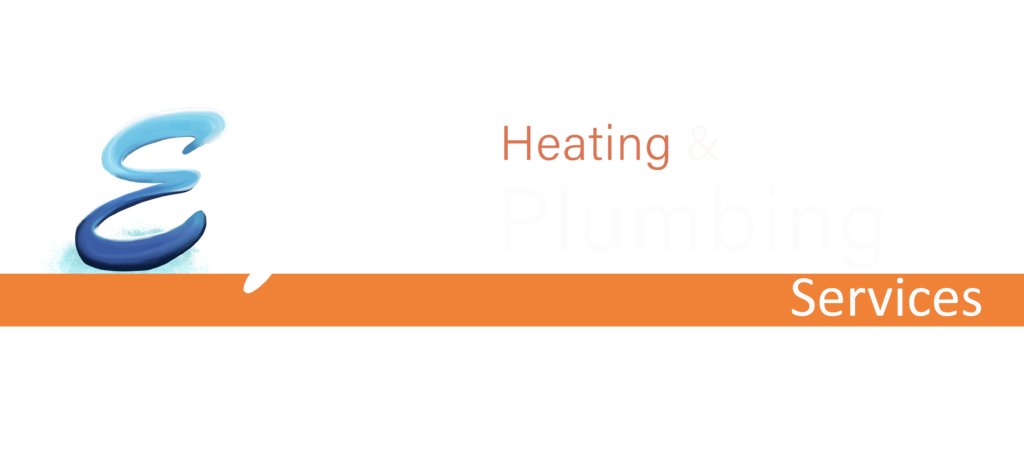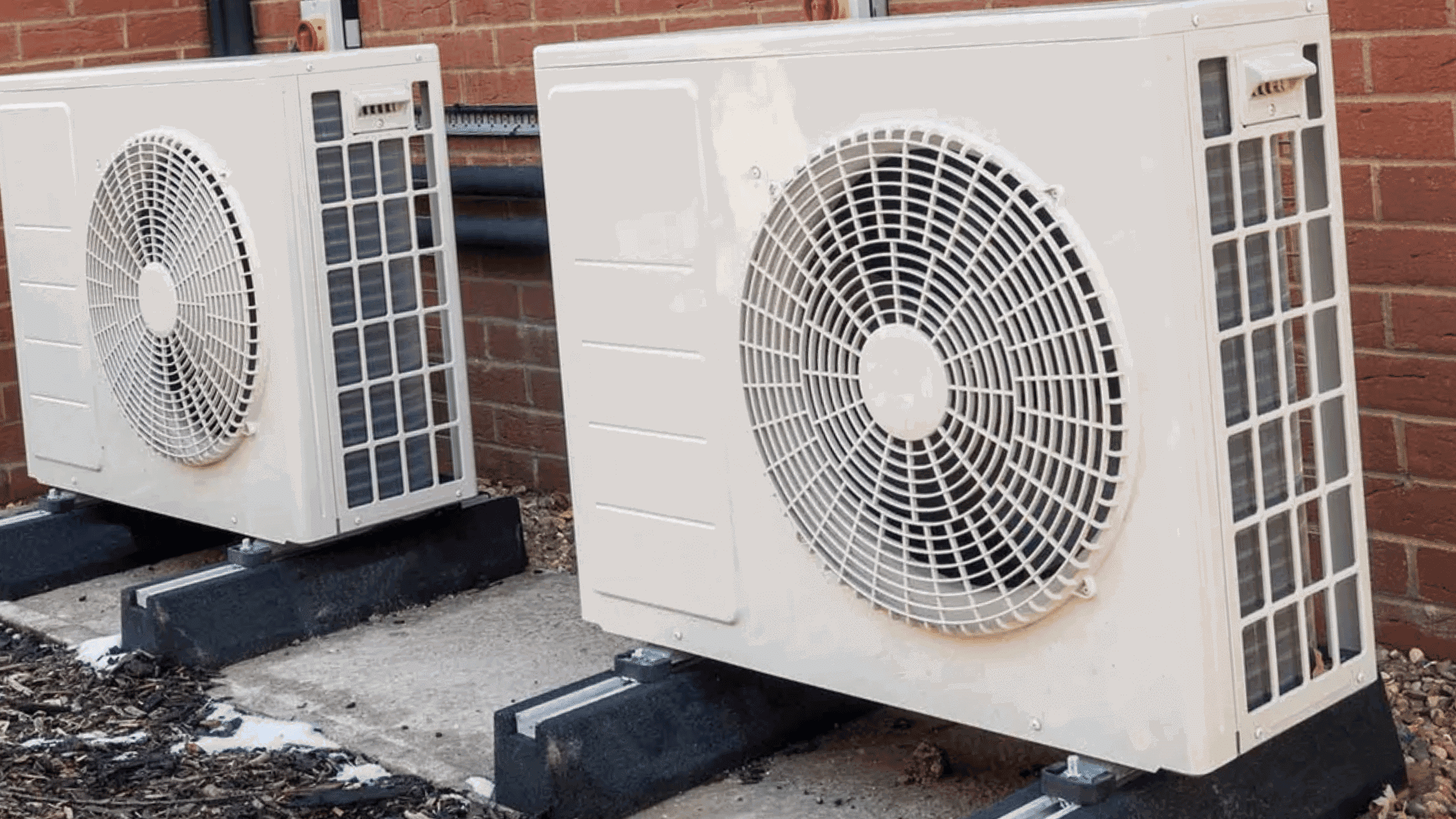
Air-source heat pumps offer a low-carbon alternative to many traditional methods when it comes to heating your home. Often also referred to as air-to-water source heat pumps, these units can be used to heat both radiators and underfloor heating, as well as your hot water stored in the hot water tank. In this guide, we’ll be exploring in detail how these air source heat pumps can be installed. First, though, it’s worth looking a bit more closely at the varied benefits these heat pumps bring with them.
What are the Benefits of an Air Source Heat Pump?
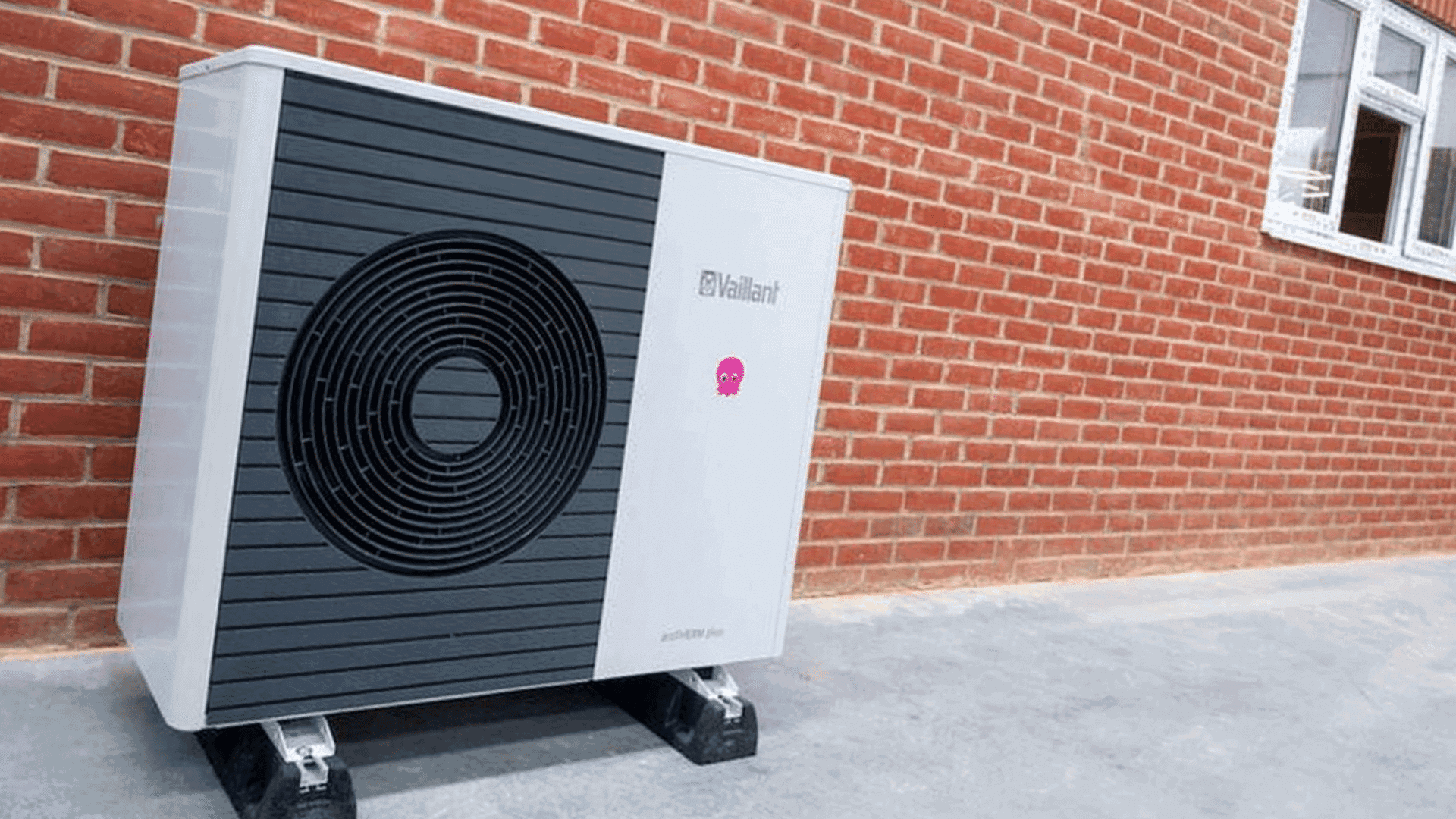
As touched upon in the introduction, one of the major benefits to air source heat pumps is that they have a lower carbon footprint than many other methods of heating (up to 44% lower, in fact). What’s more, they can help you save on your energy bills, and are eligible for the renewable heating incentive (RHI) – a government scheme which encourages greener heating options.
With comparatively low levels of maintenance required, as well as a long lifespan, air source heat pumps have become increasingly attractive over the past few years. Air source heat pumps are relatively complex heating systems, which raises the question – can you install one yourself, or do you need to hire a specialist for the installation?
Can I Install an Air Source Heat Pump Myself?
Generally, for the layperson, we’d say that no, you probably shouldn’t attempt to install an air source heat pump yourself. This is better left to qualified plumbers and installers. If you’ve got experience within the plumbing or electronics industries – or are an incredibly competent DIYer – then you could potentially attempt the installation, though we’d still suggest you call in a specialist instead.
If you fall into one of the latter categories, and are really looking to save on installation costs by doing it yourself, then you can attempt the installation yourself. Again, though, we stress that the simplest, most effective way to install an air source heat pump is to hire a specialist; it might cost more in the short-term, but the installation is likely to be of a better quality, and therefore will save you money in the longer term on any potential repairs or damage stemming from poor build quality.
How Easy is it to Install an Air Source Heat Pump?
If you’re a qualified heating system professional, then in truth, pretty easy! If you’re not, then not so much. A qualified specialist will most likely be able to install your pump in as little as 2-5 days. This will include everything from creating a concrete platform for the exterior unit to stand on, all the way through to calibrating the pump’s sensors so that it can be used with your thermostat.
Common Heat Pump Manufacturers
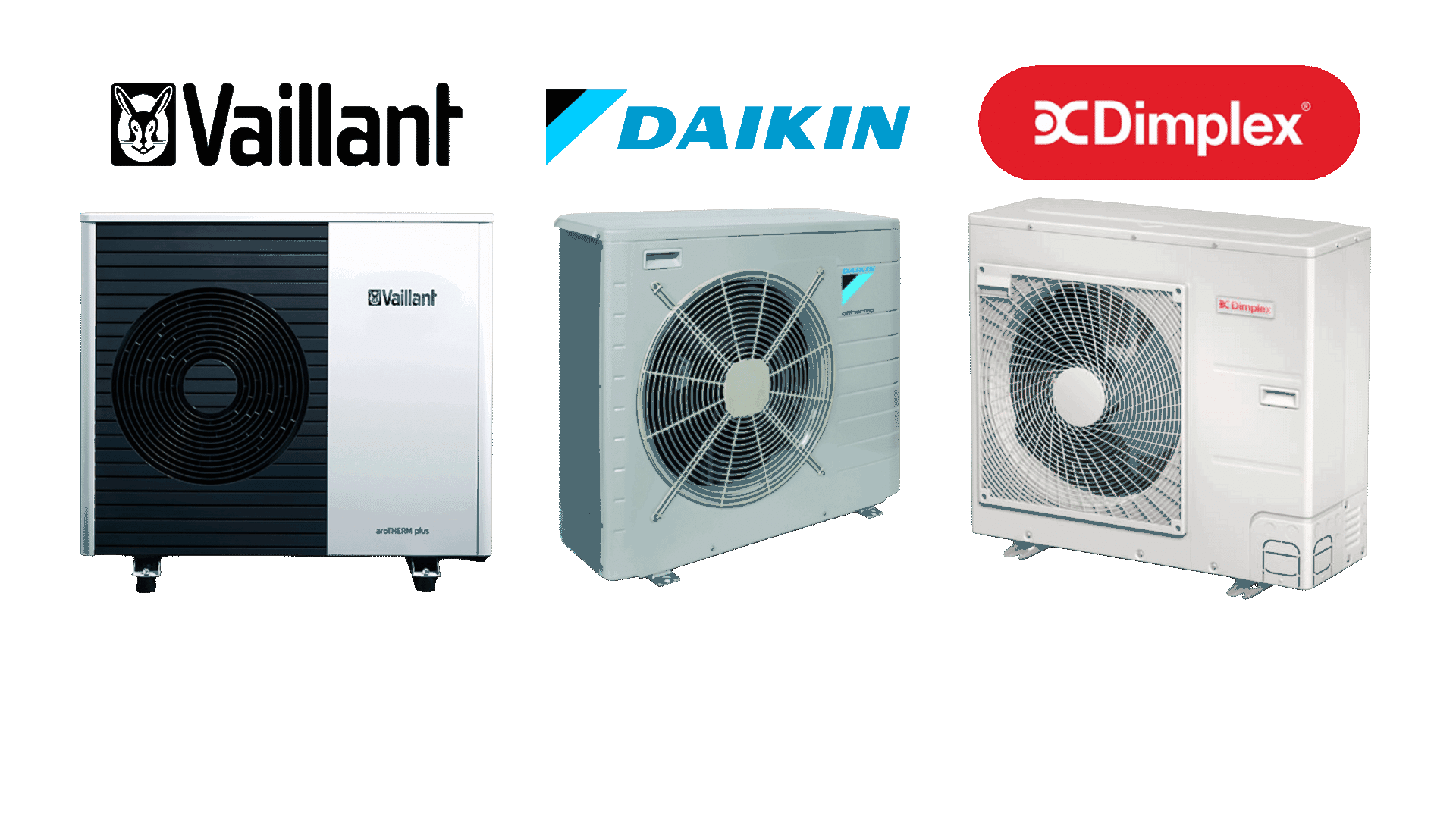
The most common and reliable heat pump manufacturers include Vaillant, Daikin and Dimplex.
How Expensive are Air Source Heat Pumps?
Air source heat pump costs (from start to finish) can vary significantly, depending on various factors, including: unit cost, labour costs, the property type (whether newbuild or existing) and more. As a rough estimate, however, you’d expect to pay anything from £7,000 to £13,000 all-told.
They can be a bit cheaper, or significantly more expensive, it all depends on those factors we’ve mentioned. It’s also why it’s worth getting several quotes from different contractors to make sure you’re getting the best deal.
How Much Can I Save on My Energy Bills?
According to Which.com, replacing an old inefficient boiler with a modern air source heat pump can save you up to £1,410 per year. It will only take a few years, therefore, before your new pump has repaid its installation costs.
What are the Components of an Air Source Heat Pump?
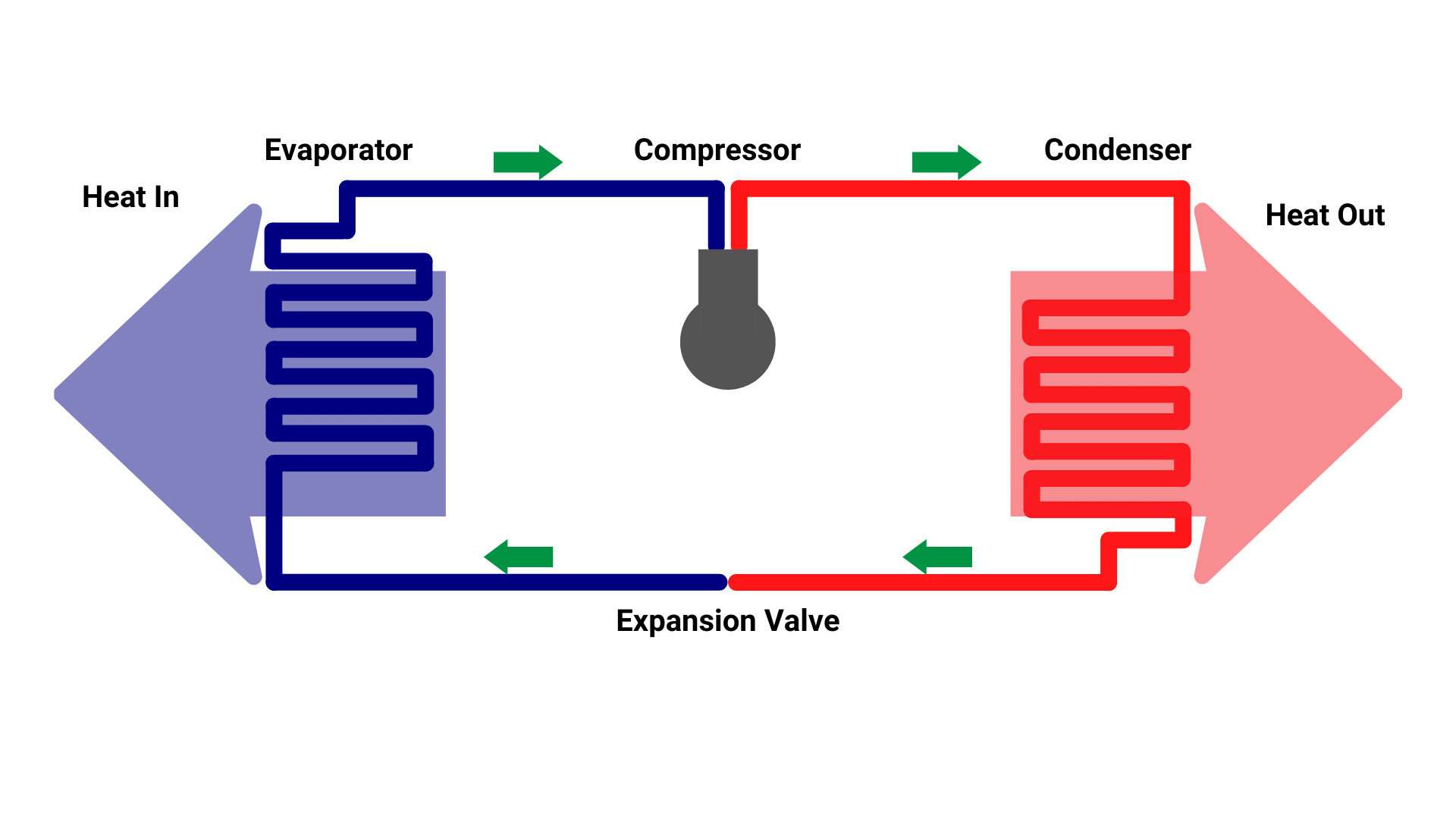
Whilst some might have additional extras, most standard air source heat pumps will consist of the following components as standard:
- Heat exchanger coils on both the indoor and outdoor units. The exterior coil sits in an evaporator, whilst the interior coil sits in the condenser. These tubes contain refrigerant; the outdoor coil absorbs ambient heat from the air, which then warms the refrigerant and converts it into a vapour (from liquid form to gaseous form). It then passes through the compressor.
- A compressor. The compressor increases the pressure of the gaseous refrigerant which enters, as well as increasing the heat. So, we now have a high-pressure, high-temperature vapour. This then passes over the heat exchanger within the indoor unit, which gives us our heating. To start the cycle again, the refrigerant needs to be lower in temperature and pressure, for which an expansion valve is used.
- An expansion valve. The expansion valve is critical in restarting the whole cycle of heating and cooling around which the pump functions. When the high-pressure liquid refrigerant passes through the expansion valve, the valve helps return it to a lower-pressure substance once again, enabling the whole cycle to start over.
Air Source Heat Pump Installation
1. Ensure You Have Enough Space Outside Your Property
Your air source heat pump has two main units, one of which will sit outside your property – a bit like an HVAC unit. Sat on a flat surface like a concrete base, the main priority is that the outdoor unit receives plentiful airflow. This part of the unit compresses air, which in turn heats it. This is connected to the interior unit, which is in turn connected to whichever heating units you want the pump to offer heating for; in most cases, you radiators, underfloor heating and hot water tank.
2. Connecting the Units
The two units (the exterior and interior) are connected by both electrical wiring and tubes containing refrigerants. The complexity of the wiring and coolants is one of the things that makes air source heat pump installation generally too complex for most people to consider attempting it DIY.
3. Setting up the Sensors
The installer will then correctly set up the pump’s sensors so that the information sent to your home’s thermostat is correct and accurate.
4. Looking After Your Pump Down the Line
Once your pump is installed, it needs very little looking after save for the odd cleaning of its filters, coils and valves.. This is best done by an installer, however this is an area that more competent DIYers can attempt themselves. It’s also important that the area surrounding your pump is left clear of detritus at all times. The efficacy of your unit depends on clear airflow to the pump, so obstructions like the buildup of plant matter can hinder how well it functions.
How it Works Diagram
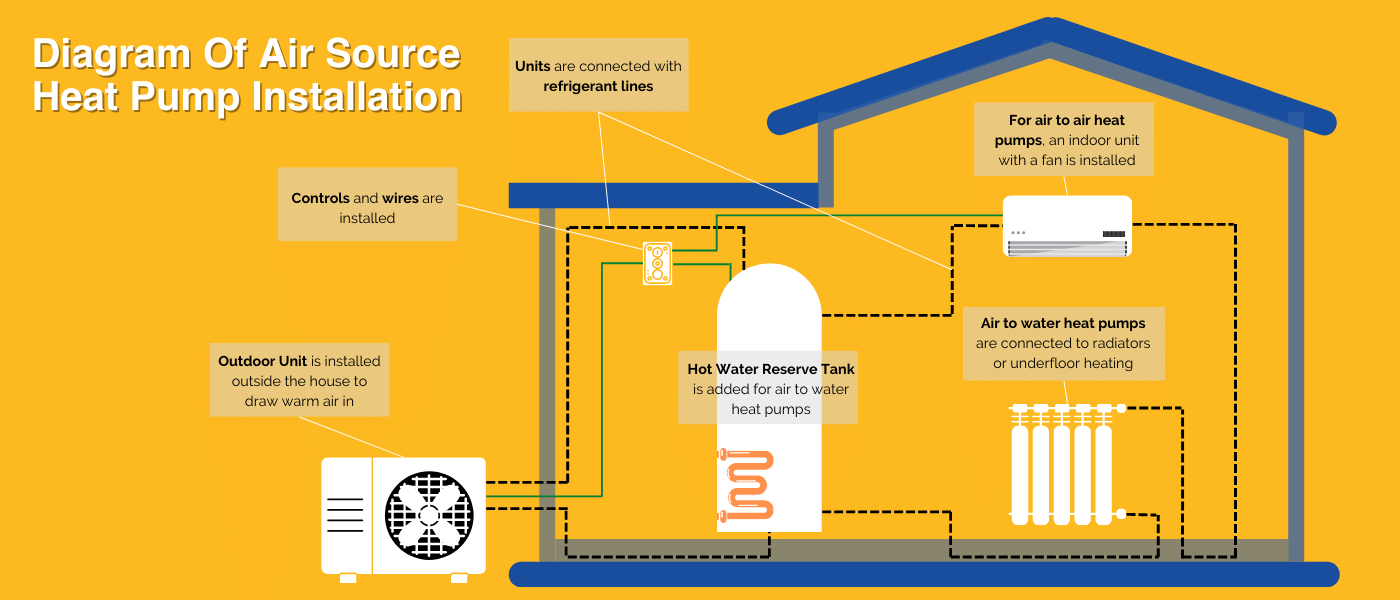
Air Source Heat Pump Electrical Requirements
For most heat pumps, a breaker of between 15 and 60 amps depending on the output of the pump in question. As a rough estimate, an average air source heat pump will cost around 5.75p per kWh to operate.
What Qualifications Do You Need to Fit an Air Source Heat Pump?
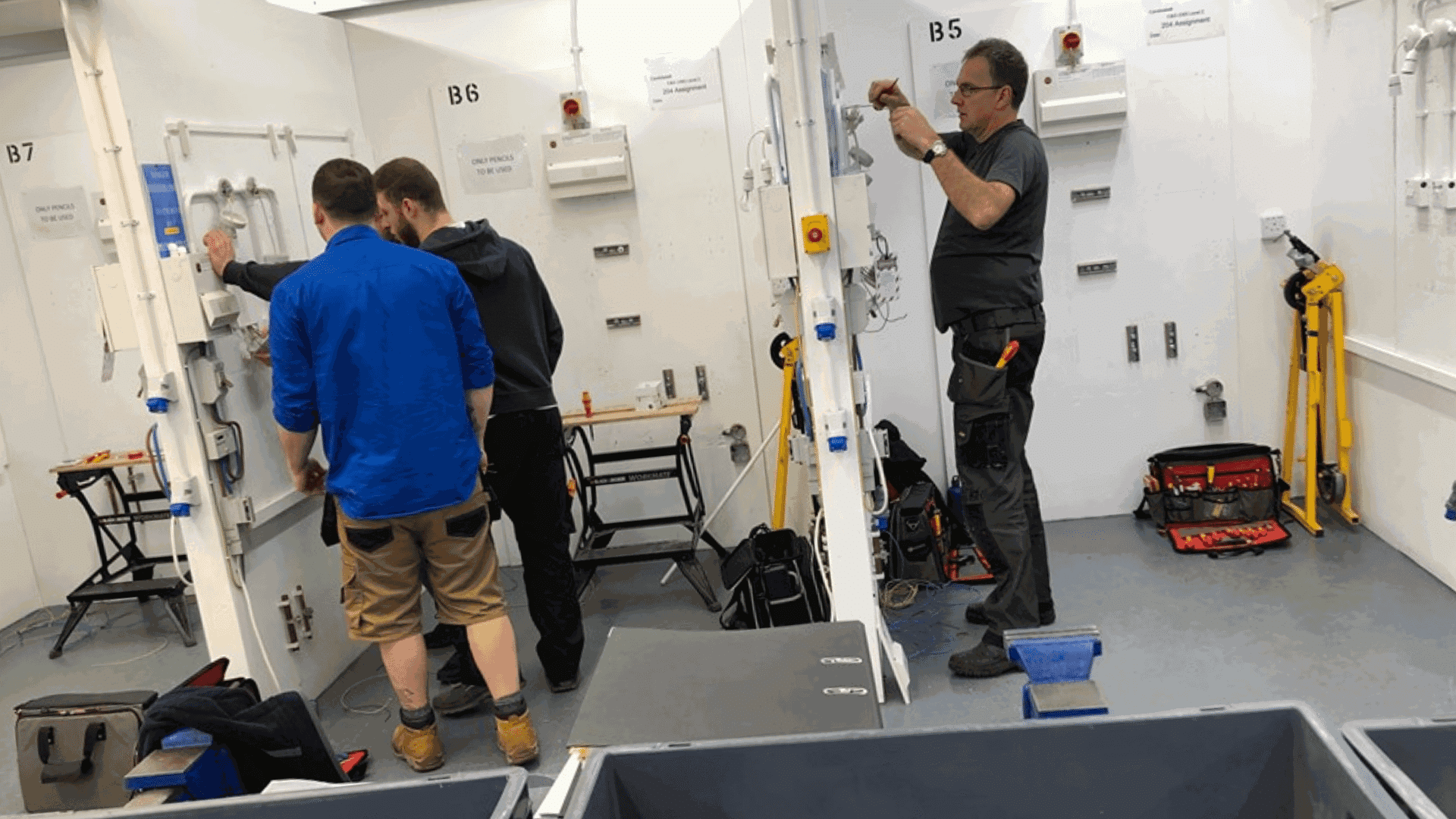
Whilst there are no mandatory qualifications needed to install an air source heat pump, we’d definitely recommend that installers get some extra training. We’d recommend as a bare minimum, for instance, undertaking a training course from a reputable heating/training provider such as NICEEIC or other similar providers.
Do I Need Planning Permission to Install an Air Source Heat Pump?
Provided certain conditions are met, then the installation of an air source heat pump is considered a permitted development, that’s to say, planning permission isn’t required. These permissions are:
- The air source heat pump must comply with the Microgeneration Certification Scheme Planning Standards (MCS 020).
- The compressor unit (outdoor) volume mustn’t exceed 0.6 cubic metres.
- Only one air source heat pump falls under permitted development. Additional air source heat pumps would require planning permission.
- The components of the air source heat pump must be a minimum of one metre from the property boundary.
- It must also be solely used for heating purposes.
- For a full list of the required conditions, click here.
Do You Need a Water Tank With an Air Source Heat Pump?
No! An air source heat pump can be used for the sole purpose of your radiators or your underfloor heating if you don’t have a hot water tank, though it won’t be able to provide you with hot water.
Do Heat Pumps Work With Existing Radiators?
Yes, there’s no reason why your new air source heat pump shouldn’t work well with your home’s existing radiators.
Where Does an Air Source Heat Pump Need to be Located?
The external unit needs to be placed on a flat surface and be unobstructed. The location of the internal unit is less important, however it needs to be able to easily connect up with its outdoor counterpart.
Final Thoughts…
So, there you have it! Your very own air source heat pump installation guide. These effective little units are clean, effective and easy to look after, what’s not to like? If you’d like to find out any more about air source heat pumps and are interested in getting one installed. We would advise messing about doing it yourself and instead come to engineers like us that can easily install your airsource heat pump in Worcestershire. Contact Elgar Services today on 01906 604 417 or by sending us an email at [email protected]. However you wish to get in touch, we look forward to hearing from you.
